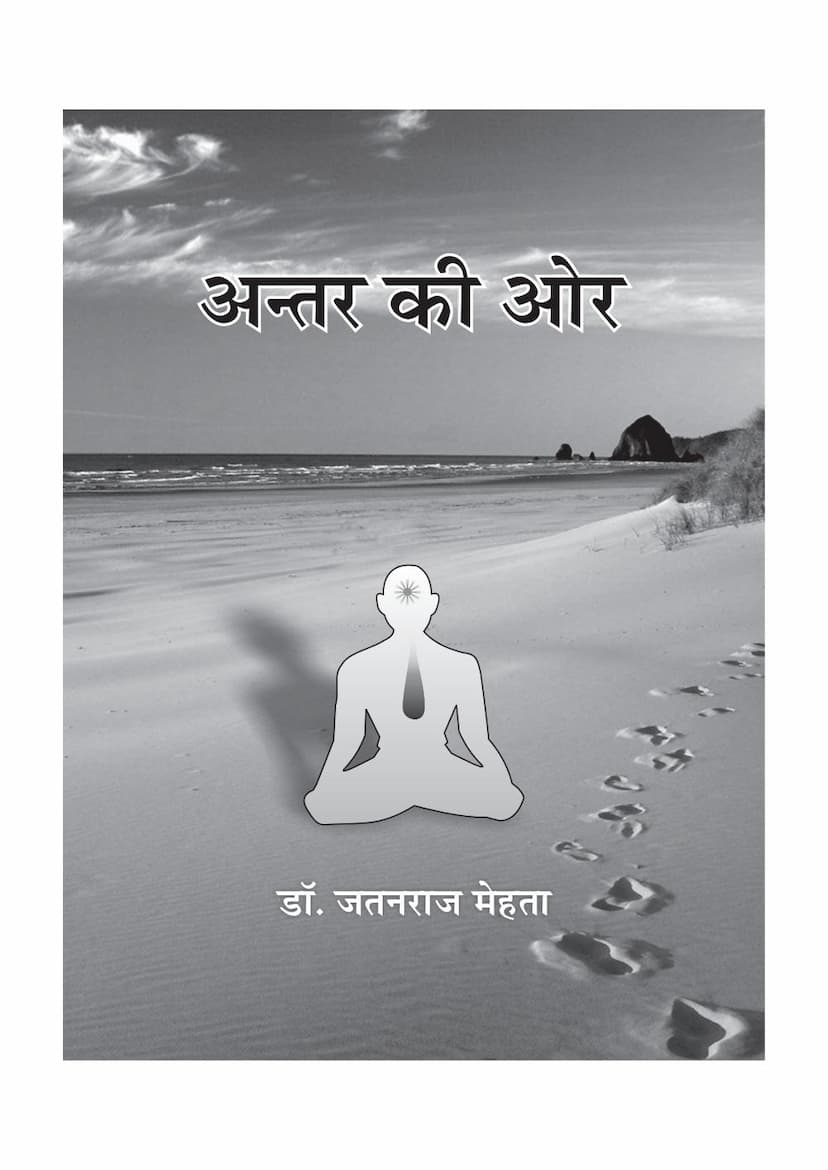Antar Ki Aur
Added to library: September 1, 2025

Summary
Here's a comprehensive summary of the Jain text "Antar Ki Aur" by Jatanraj Mehta:
"Antar Ki Aur" (Towards the Inner) is a collection of prose poems (gady geet) by Dr. Jatanraj Mehta, published by Prakrit Bharti Academy. The book is dedicated to Acharya Shri Hastimalji M. Sa., the author's revered spiritual guide, who is credited with awakening the author's inner potential.
Core Themes and Philosophy:
The central theme of "Antar Ki Aur" revolves around an introspective spiritual journey, a deep communion with the Divine, and the exploration of the inner self. The author uses evocative language and imagery to express his profound devotion, spiritual yearning, and the transformative power of inner connection. Key aspects include:
- Inner Exploration: The title itself, "Towards the Inner," signifies a movement inward, away from the external world and towards the spiritual core of existence. The poems are an attempt to capture the subtle feelings and experiences that arise during moments of spiritual contemplation and divine communion.
- Divine Presence in Nature: Dr. Mehta often finds the Divine in the beauty and grandeur of nature. The poems frequently draw parallels between natural phenomena (like the sky, trees, rivers, and seasons) and the omnipresent divine consciousness. Nature serves as a canvas for experiencing the divine.
- Union with the Divine: A recurring motif is the longing for and eventual experience of union with the Supreme Being, referred to as "Prabhu," "Vibhu," "Anant," or "Anandghan." This union is described as a dissolution of the ego, a merging of the individual self with the universal consciousness, leading to infinite bliss.
- Spiritual Transformation: The poems express a desire for purification, transcendence of worldly attachments, and the attainment of inner peace and enlightenment. This involves shedding ego, desires, and negative emotions, and embracing virtues like truth, love, compassion, and self-control.
- Devotion and Surrender: The author's writing is infused with a deep sense of devotion and unconditional surrender to the Divine. He expresses a complete reliance on the Divine for guidance, strength, and ultimate fulfillment.
- Jain Principles: While not overtly theological in a rigid sense, the work is deeply rooted in Jain philosophical concepts. The emphasis on inner transformation, detachment from worldly pleasures, the pursuit of spiritual knowledge, and the concept of the soul's journey align with Jain teachings. The preface by Dr. Chhaganlal Shastri mentions the author's adherence to Arhat ideals and his assimilation of anekantavada (non-one-sidedness) in his thought process.
- The "Gady Geet" Form: The book is a significant contribution to the genre of "gady geet" (prose poems) in Hindi literature. This form, characterized by its lyrical quality, emotional depth, and rhythmic flow without strict metrical constraints, allows for the expression of intense subjective feelings. The forewords by D.R. Mehta and Dr. Taraprakash Joshi highlight the beauty and spiritual resonance of this literary style.
Content Highlights:
The book features a vast collection of short prose poems, each focusing on a specific spiritual experience, realization, or aspiration. Some notable examples and their underlying sentiments include:
- "Virat Ke Darshan" (Visions of the Cosmic): The initial poems describe experiencing the vastness of the universe and the divine presence within it, leading to a feeling of oneness.
- "Asha Deep" (Lamp of Hope): This poem signifies how hope, a faint ray of light, illuminates the darkest of nights and guides towards truth.
- "Anant Chhavi" (Infinite Image): This reflects the realization of the divine presence within one's own heart.
- "Man Rupi Dharti" (The Mind as Earth): This poem uses the metaphor of earth and rain to illustrate how cultivation of virtuous thoughts (like dharma) leads to spiritual growth, while negative thoughts are weeds to be removed.
- "Samagra Chetna" (Total Consciousness): This expresses the author's fervent prayer for the manifestation of inner divine power and the filling of one's being with divine light.
- "Shashwat Vijay" (Eternal Victory): This poem speaks of the inner battle against base instincts and the triumph of spiritual virtues, which constitutes true human victory.
- "Adbhoot Chhavi" (Incomparable Image): This depicts the fleeting yet profound glimpses of divine beauty that inspire the soul.
- "Maya-Pishachini" (The Maya-Fiend): This poem highlights the struggle against illusion and worldly attachments, a key aspect of spiritual progress.
- "Anant Ki Khoj" (The Search for the Infinite): This conveys the relentless quest for the divine, guided by spiritual teachers and a deep inner longing.
- "Ahankar Visarjan" (Shedding of Ego): This poem illustrates the process of overcoming ego and its negative influences, leading to the dawn of true consciousness.
- "Sarvatra Tu Hai" (You are Everywhere): This concluding thought reiterates the omnipresence of the Divine in all aspects of creation.
Overall Impact:
"Antar Ki Aur" is presented as a guide for readers seeking spiritual solace and inner peace in a complex and often chaotic modern world. The book is praised for its lyrical beauty, profound spiritual insights, and the author's ability to articulate deep spiritual experiences in a relatable and accessible manner. It aims to inspire readers to embark on their own introspective journeys, fostering a connection with the divine and leading to a more meaningful and fulfilling life. The accompanying testimonials from literary figures emphasize the book's aesthetic value, spiritual depth, and its relevance in contemporary times.